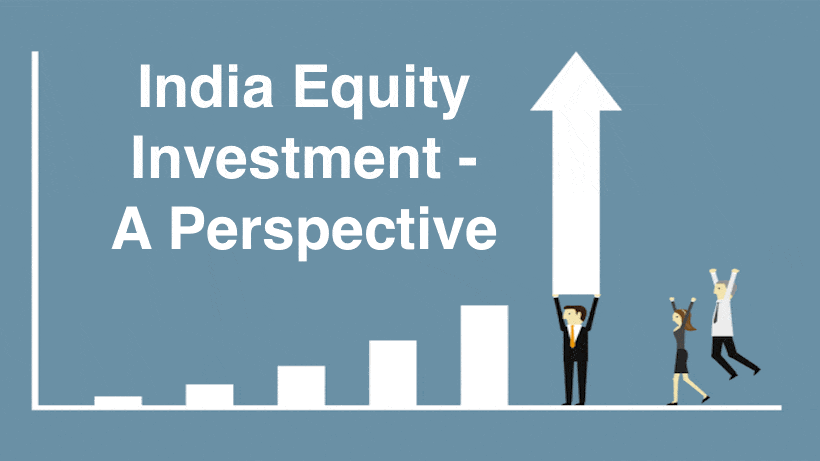We expect India equity market to continue to climb wall of worries of US-China Trade issues to domestic slow-down fears. With major uncertainty out from an election verdict of a stable & decisive govt, the market is expected to rally on hopes of reforms to accelerate growth. Though, long term structural issues will take time – whether it pertains to public sector bank mergers to privatisation initiatives.
Cement volumes and prices are showing encouraging trends and with more focus on improving farm/rural income, any slow down in autos and consumption demand should reverse. Infrastructure order book is also showing good momentum across urban infrastructure, transportation and hydro-carbo segments and with higher execution cycle, earnings in this segment should witness reasonable growth. Auto sector on the other hand has slowed down considerably after many years and is a cause for worry. We do hope this to be a temporary phenomenon and lower interest rates, normal monsoon and festive season demand in 2H along-with pre-buying ahead of BS VI norms, should help revive autos to an extent.
India Macro variables have turned positive in the form of benign inflation (that is likely to be sustained for some time and would persist – RBIs own estimate of inflation is sub 4% over the next 12 months) and with a low growth data of the recent past, we do expect RBI to act sensibly and continue to be in a rate cutting cycle mode. Prior to June policy, 50 bps interest rate cut was initiated by RBI this year and we expect more to come over the course of this year to revive domestic slowdown to an extent.
Mid-small cap space especially had seen excessive bit of correction last year and we see a lot of stock specific investment opportunity. The rally is still polarised across large and few midcaps and still not spread fully to small cap side of the market. We expect the rally to be even more broad-based going forward.
Besides, the Global outlook indicates that developed markets will slow down while emerging markets will stabilise. So, emerging markets will take the lead in driving global growth. Besides, the US is no longer talking about increasing rates. On the other hand, slower growth or recession fears in US is one again renewing hope of a Fed rate cut in US. Consequently, in search of higher yield in a low-return world we could witness greater FII flows from developed to emerging markets including India
The corporate earnings growth for Nifty is driven largely by financials – on the back of normalised earnings of corporate banks which are coming off a low base of provisioning in 4qfy18. Excluding financials, earnings growth for nifty is flattish or single de-growth – weak earnings has come from autos, metals and telecom, given the sharp margin compression, offset partially by higher growth of cement and utilities and stable performance by IT, OMC and Capital Goods. Going forward, we expect close to 18-20% growth in net profits of the Nifty-50 Index for FY2020 and FY2021 with the financial sector accounting for a large portion of incremental profits due to normalisation of profits of banking sector post peaking of NPAs in FY18-19.
Global crude price, barring any risk of short term geopolitical spike, is also reflecting a subdued trend going forward, which is positive. Crude, despite geo-politics and sanctions, expect to be range bound to bearish as supply balance and availability of alternatives will act as an automatic mechanism to contain oil prices. With fuel price deregulation over time, the impact of higher oil prices has been increasingly passed on to the consumer instead of it being absorbed. So one need not worry too much and expect oil to be lower going forward. This should largely help oil importing country like India in terms of CAD (current account deficit).
Risk in the near to medium term for markets include global economic slowdown being aggravated by escalation of trade war between China and the US and if it gets stretched into a full-fledged economic war.
Expectations from Modi 2.0
We have following under-mentioned expectation from the newly elected Modi government on economic front – Expect govt to continue to pursue economic reforms. Resolve structural issues like nbfc liquidity crisis (though RBI will play an important role here).
Carry forward to address long term structural issues of psu banks via mergers and recapitalisation.
Our wish list is on the following two aspects – Should implement Privatisation in a big way to have fiscal bandwidth
Needs to work hard on land & labour reforms
Overall, the focus should remain on public infrastructure expenditure such as roads, railways, and rural-urban infrastructure. Expedited government spending (which has been lagging in recent months) could arrest any incremental weakening of demand. The focus should shift to the next set of reforms aimed at improving efficiency, productivity, and job opportunities. Reforms in agriculture, financial sector, infrastructure, labour, land, and public finances are essential to achieve sustainable high growth.
Several businesses and companies offer exciting opportunities for long term equity investors as under – Consumer business – Investment opportunity exists in certain companies in the food processing, jewellery retailing, liquor, TV broadcasting and consumer lighting. Relative under-penetration, migration of informal to formal economy, changing demographic profile provides exciting and scalable opportunities for these companies to grow and prosper.
Agriculture business
Companies that produce farm equipment, tractors, and seeds including global crop protection companies are expected to do well. Even today, only 1/3rd of Indian farmers are aware of usage of crop protection products like herbicides, pesticides and penetration has a long way to go. Besides, government focus to improve farm income augurs well for this sector in the long run. Sugar and ethanol theme appear to have positive outlook given higher ethanol blending programme which will accelerate earnings of sugar millers, though the core sugar business has its share of volatility. Companies in Speciality chemicals business given continued business shift from China due to pollution control norms also are on a sustainable positive growth path. Besides, we like few infrastructure and engineering businesses like civil & road construction, machine tools, bearings, pumps and pipes, etc. This is largely due to govt’s thrust on infrastructure and housing besides expected revival in private sector capex. Govt. capex continues to intensify across roads, railways, highways, defence, etc.
Investment can also be selectively made in private banks and Select NBFC (non-banking financial services) such as in gold and micro finance with no asset liability or ALM mismatch. India is a capital starved and under banked economy and credit to GDP ratio is pretty low. So there is huge growth opportunity for many retail finance products. NBFCs have been playing an important role in bridging the gap between organised and unroganised lending and are considered an important pillar of the economy (size of NBFC sector in terms of loan size is close to 30 lac crore in 1Hfy19). The business model of this space is not permanently damaged in terms of their reach/unbanked territory and niche verticals. Corporate banks with improving NPA profile including NBFCs where asset quality is intact and where valuations are at attractive sub 1.5-2x adjusted book values look attractive. PSU banks as a category given attractive valuations and strong franchise can be a dark horse amidst much of indiscriminate lending and loan loss provisions behind.
Gold finance companies enjoy competitive advantage over banks and money lenders due to domain knowledge and connectivity. Penetration of organized gold mortgage financing is still only about 4% and there is room to grow. Besides, shorter duration products delink business from gold price fluctuations or volatility.
Auto barring tractors have definitely seen slowdown last quarter as it is largely credit financed, and NBFC slowed down disbursements. Besides, weak auto numbers were led by factors such as higher insurance costs and manufacturers increasing prices of vehicles that met higher safety standards. However, with liquidity issue getting normalised with NBFCs, agri and rural push and lower interest rates, we see current slowdown as temporary and not structural. Select auto ancillary companies with global client relationship, cost and engineering competence and increasing scale are better placed in the current context of domestic slow-down.
Technology companies broadly have witnessed single to low double digit growth and with dollar appreciation behind, we are not too excited. We have seen pressure on margins in most cases. Also, excessively priced consumer companies valued at 50-60x earnings or real estate companies facing excessive unsold inventory situation in select locations do not merit investment opportunity on a relative basis as compared to other sectors. Metals (given global slowdown to trade war risks) and oil refining business on expected earnings decline can be avoided for now
Overall, we remain positive on long term India’s growth story. From being a $1000 per capita during the global financial crisis, we are at $2000 per capita 10 years later, with an economy size of $2.5 trillion in GDP. With several structural reforms including GST, the stage is set for an earnings recovery and solid growth over the next 3-5 years. This would mean several companies can create serious wealth for Investors over time.
Happy Investing !







